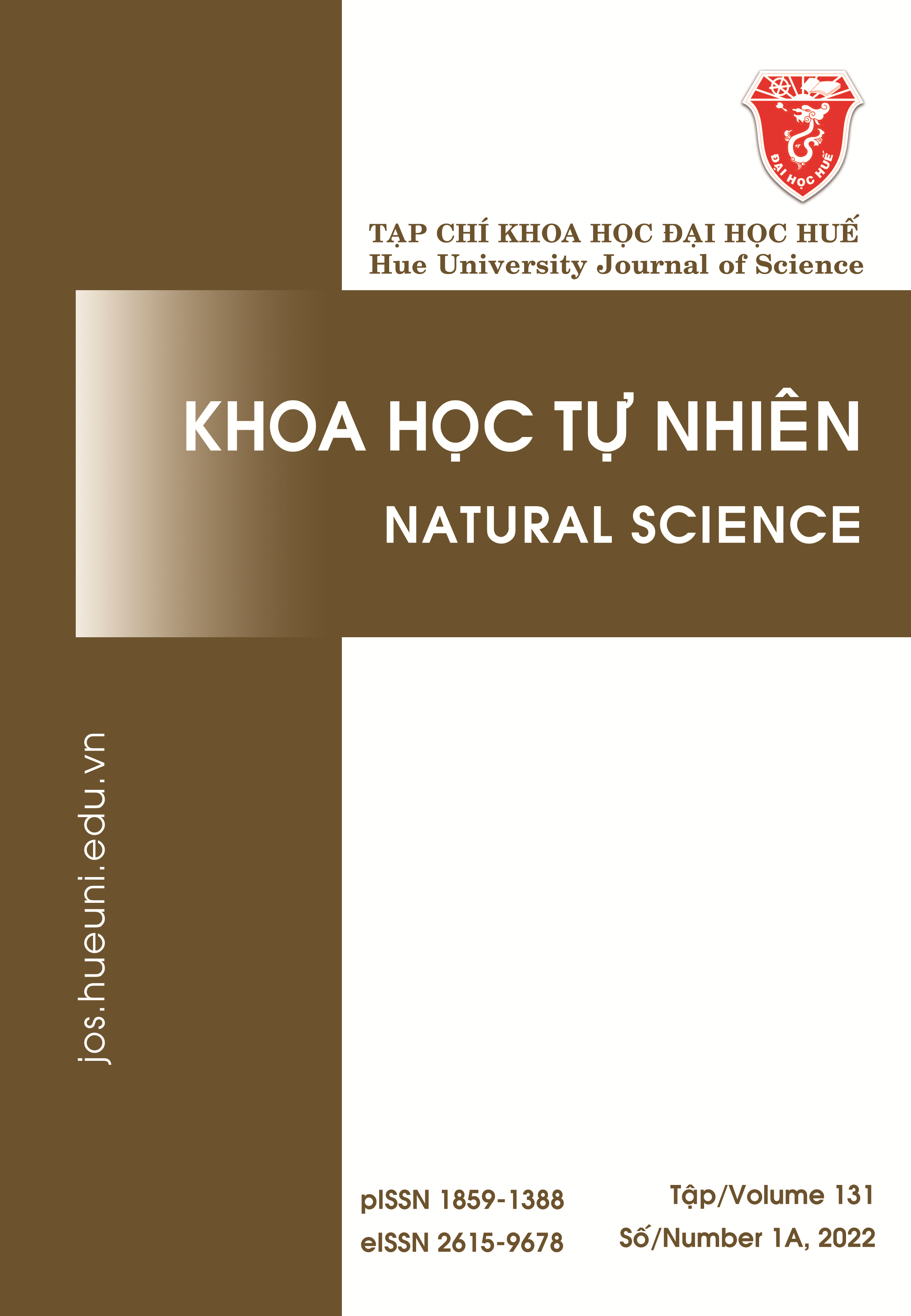Tóm tắt
Trong nghiên cứu này, TiO2/than hoạt tính từ tro trấu (TiO2/RHAC) đã được tổng hợp bằng phương pháp trộn lẫn than hoạt tính và phức titanium. Than hoạt tính được tổng hợp từ tro trấu và phức titanium hòa tan trong nước tổng hợp từ anatase bằng cách tạo phức peroxide. Hỗn hợp được nung trong môi trường thiếu oxy ở 600 °C. Vật liệu tổng hợp được phân tích bằng nhiễu xạ tia X, kính hiển vi điện tử quét và đẳng nhiệt hấp phụ/giải hấp phụ ni tơ. TiO2/RHAC có khả năng hấp phụ cao đối với xanh methylene. Số liệu đẳng nhiệt cân bằng tuân theo mô hình Langmuir và dung lượng hấp phụ cực đại tính theo mô hình này là 144,7 mg·g–1. Chất bị hấp phụ có thể được loại bỏ bằng cách chiếu sáng bằng đèn chiếu nhờ khả năng xúc tác quang hóa của nó. Sau ba lần tái sinh, dung lượng hấp phụ thay đổi không đáng kể. TiO2/RHAC có tiềm năng làm chất hấp phụ xử lý phẩm màu nói chung.
Tài liệu tham khảo
- Yagub MT, Sen TK, Afroze S, Ang HM. Dye and its removal from aqueous solution by adsorption: A review. Advances in Colloid and Interface Science. 2014;209:172-84.
- Panizza M, Bocca C, Cerisola G. Electrochemical treatment of wastewater containing polyaromatic organic pollutants. Water Research. 2000;34(9):2601-5.
- McYotto F, Wei Q, Macharia DK, Huang M, Shen C, Chow CWK. Effect of dye structure on color removal efficiency by coagulation. Chemical Engineering Journal. 2021;405:126674.
- Babuponnusami A, Muthukumar K. A review on Fenton and improvements to the Fenton process for wastewater treatment. Journal of Environmental Chemical Engineering. 2014;2(1):557-72.
- Tian C, Zhang Q, Wu A, Jiang M, Liang Z, Jiang B, et al. Cost-effective large-scale synthesis of ZnO photocatalyst with excellent performance for dye photodegradation. Chemical Communications. 2012;48(23):2858-60.
- Girgis BS, Yunis SS, Soliman AM. Characteristics of activated carbon from peanut hulls in relation to conditions of preparation. Materials Letters. 2002;57(1):164-72.
- Tsai WT, Chang CY, Wang SY, Chang CF, Chien SF, Sun HF. Cleaner production of carbon adsorbents by utilizing agricultural waste corn cob. Resources, Conservation and Recycling. 2001;32(1):43-53.
- Salanti A, Zoia L, Orlandi M, Zanini F, Elegir G. Structural Characterization and Antioxidant Activity Evaluation of Lignins from Rice Husk. Journal of Agricultural and Food Chemistry. 2010;58(18):10049-55.
- Schneider J, Matsuoka M, Takeuchi M, Zhang J, Horiuchi Y, Anpo M, et al. Understanding TiO2 Photocatalysis: Mechanisms and Materials. Chemical Reviews. 2014;114(19):9919-86.
- Sang L, Zhao Y, Burda C. TiO2 Nanoparticles as Functional Building Blocks. Chemical Reviews. 2014;114(19):9283-318.
- Du X, Bai X, Xu L, Yang L, Jin P. Visible-light activation of persulfate by TiO2/g-C3N4 photocatalyst toward efficient degradation of micropollutants. Chemical Engineering Journal. 2020;384:123245.
- C. F. Baes and R. S. Mesmer: The Hydrolysis of Cations. John Wiley & Sons, New York, London, Sydney, Toronto 1976. 489 Seiten, Preis: £ 18.60. 1977;81(2):245-6.
- Chakraborty B, Weinstock IA. Water-soluble titanium-oxides: Complexes, clusters and nanocrystals. Coordination Chemistry Reviews. 2019;382:85-102.
- Masato K, Makoto K, Koji T, Valery P. Application of Water-Soluble Titanium Complexes as Precursors for Synthesis of Titanium-Containing Oxides via Aqueous Solution Processes. 2010;83(11):1285-308.
- Farghali AA, Zaki AH, Khedr MH, Suef B. Hydrothermally synthesized TiO2 nanotubes and nanosheets for photocatalytic degradation of color yellow sunset. International Journal of Advanced Research. 2014;2(7):285-91
- Kasuga T, Hiramatsu M, Hoson A, Sekino T, Niihara K. Titania Nanotubes Prepared by Chemical Processing. Advanced Materials. 1999;11(15):1307-11.
- Bavykin DV, Parmon VN, Lapkin AA, Walsh FC. The effect of hydrothermal conditions on the mesoporous structure of TiO2 nanotubes. Journal of Materials Chemistry. 2004;14(22):3370-7.
- Asatkar A, Saha A, Lambat TL, Singh M, Banerjee S. Biomass rice husk derived activated carbon catalyzed synthesis of 5-aryl-1,2,4-triazolidine-3-thione derivatives under metal-free aqueous medium. Materials Today: Proceedings. 2020;29:698-703.
- Wazir AH, Wazir IU, Wazir AM. Preparation and characterization of rice husk based physical activated carbon. Energy Sources, Part A: Recovery, Utilization, and Environmental Effects. 2020:1-11.
- Muniandy L, Adam F, Mohamed AR, Ng E-P. The synthesis and characterization of high purity mixed microporous/mesoporous activated carbon from rice husk using chemical activation with NaOH and KOH. Microporous and Mesoporous Materials. 2014;197:316-23.
- Kumari R, Khan MA, Mahto M, Qaiyum MA, Mohanta J, Dey B, et al. Dewaxed Honeycomb as an Economic and Sustainable Scavenger for Malachite Green from Water. ACS Omega. 2020;5(31):19548-56.
- Ghosh D, Bhattacharyya KG. Adsorption of methylene blue on kaolinite. Applied Clay Science. 2002;20(6):295-300.
- Djilani C, Zaghdoudi R, Djazi F, Bouchekima B, Lallam A, Modarressi A, et al. Adsorption of dyes on activated carbon prepared from apricot stones and commercial activated carbon. Journal of the Taiwan Institute of Chemical Engineers. 2015;53: 112-21.
- Attia AA, Girgis BS, Khedr SA. Capacity of activated carbon derived from pistachio shells by H3PO4 in the removal of dyes and phenolics. 2003;78(6):611-9.

công trình này được cấp phép theo Creative Commons Ghi công-Chia sẻ tương tự 4.0 License International .
Bản quyền (c) 2021 Array




